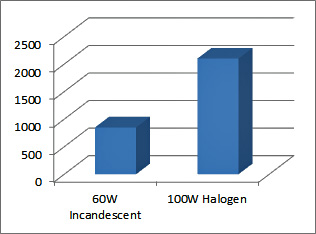Summary: Why H1’s (and H4’s) are Great Driving Lights
If you drive at 55MPH at night you are probably OK with just about any decent headlight. But if you occasionally exceed that, you need to be careful that you don’t out-drive your headlights. And H1’s, a 50 year old technology, do a great job of lighting up the road.
H1’s have a unique feature – the ability to adjust low and high beams separately. With two bulbs and two reflectors you have great flexibility in setting up your lighting to match the way that you drive.
H1’s use asymmetric lenses which enables them to distribute the light precisely. Low beam light is directed far down the road in your lane, but on the side of approaching traffic it has a much small pattern in order to keep the light out of the eyes of on-coming drivers. The high beam light covers things much more broadly.
The ability to adjust their low and high beams separately enables you to set the low beams conservatively while aggressively aiming the high beams far down the road. The high speed Autobahn type driving in Germany made it imperative to develop headlamp technology. I suspect that’s one of the main reasons that lighting technology was moving forward in Europe while stagnating with DOT imposed sealed beams in the U.S. You don’t need great lighting at 55MPH, but you sure do at higher speeds.
A Little bit of Technical Information
If you’re interested in the technology behind the great lighting provided by H1’s, please read on.
Some of the following is from, a publication by Bosch titled “Bosch Automotive Electrics and Automotive Electronics”. As a lighting geek, I find some of the information on lighting to be very interesting. For example, I have to admit I have never given much thought to what “asymmetric” meant when describing an asymmetric lens, such as those used on the early Euro headlights, H1’s and H4’s. An asymmetric lens is a clever device using optics that distribute the light unevenly, in this case with low beams.
Here’s a graphic of an asymmetric headlight’s low beam light distribution:
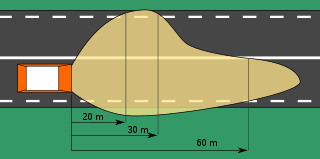
and one of high beam light distribution:
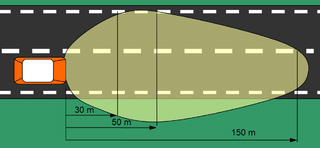
As you can see, the low beam light is directed far down the road in your lane, but on the side of approaching traffic it has a much small pattern in order to keep the light out of the eyes of on-coming drivers. I surmise that that is what the prism (the same Fresnel lens technology used in lighthouses around the world) on the driver’s side of the lens does. The high beam light covers things much more broadly.
How much brighter are H1’s than sealed beams?
A conventional incandescent bulb generates 16 to 18 lumen of light per watt, compared to 20 to 22 or more lumens per watt for a standard halogen bulb. Using 17 lumen as an average, that means that a 60W incandescent bulb generates 1,020 lumen. In comparison, using 21 lumens as an average, a 60W halogen bulb generates 1,260 lumen, an increase of 24% over the incandescent bulb.
The average incandescent sealed beam bulb is 50W while H1’s commonly use 100W bulbs for the high beams. That’s 850 lumen for the sealed beam vs. 2,100 lumen for the H1, an increase of 147%!
How do H1’s cast light?
I got out an H1 and tried to get an idea of how it manages the light. There is an interesting graphic in the article of how an H4 broadcasts light (couldn’t find one for H1’s, but I think they’re somewhat comparable). Here it is:
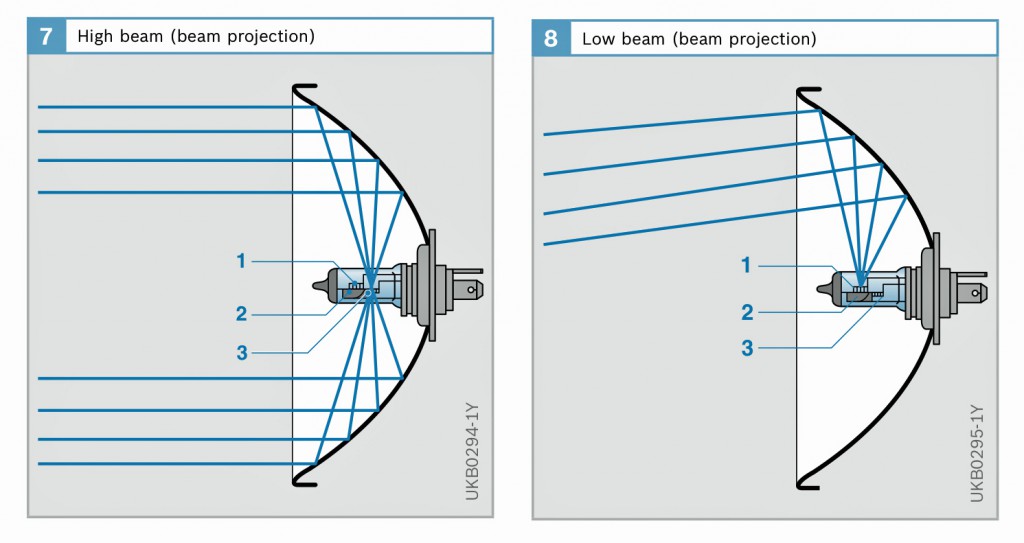 Here’s the legend:
Here’s the legend:
#1 – Low beam filament
#2 – Shield
#3 – High beam filament
And a picture of a LHD H4 lens with the prism for the low beam circled:
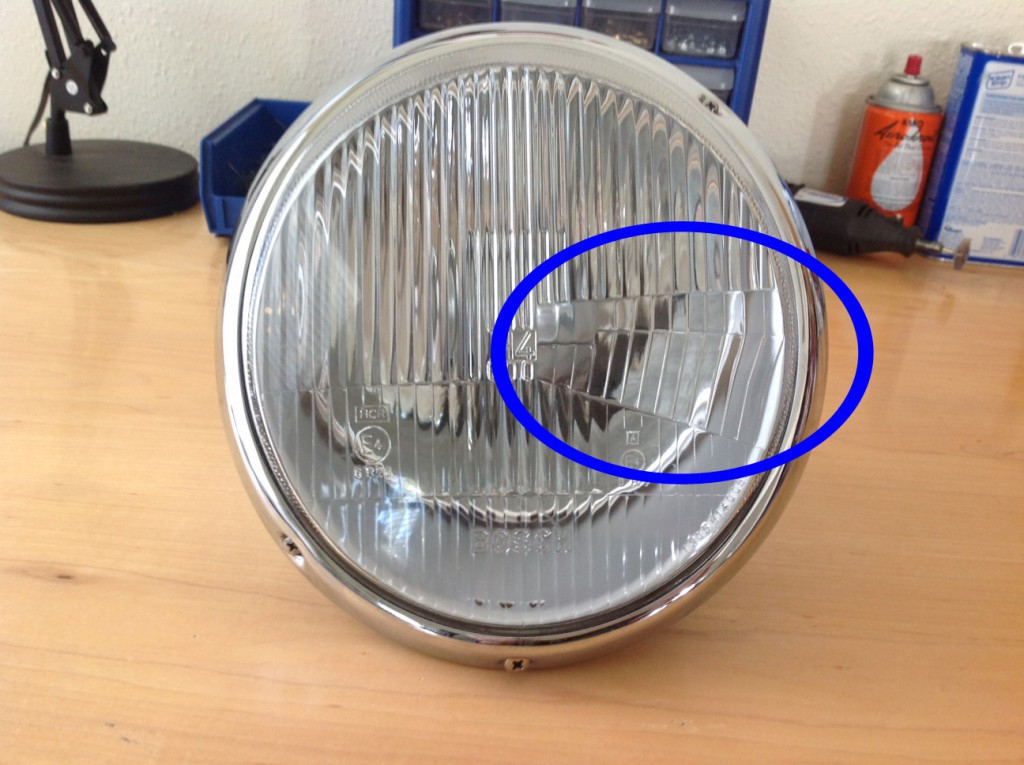 The prism is on the side of the driver as that’s the side of on-coming traffic. As you can see, all of the light bounces off of the reflector (which is why you need the reflectors to be in great condition). The low beam projects off of the reflector at a downward angle. While the graphic and picture are of an H4, an H1 works pretty much the same. When you look at an H4 or H1 lens you can see what happens. The upper rays of the low beam are broadcast unimpeded while the lower rays are “bent” downward by the prism, keeping them out of approaching drivers eyes. The high beam projects off of the lower part of the reflector (of course the H1 has it’s own, separate high beam reflector) and is broadcast outward, underneath and unimpeded by the prism.
The prism is on the side of the driver as that’s the side of on-coming traffic. As you can see, all of the light bounces off of the reflector (which is why you need the reflectors to be in great condition). The low beam projects off of the reflector at a downward angle. While the graphic and picture are of an H4, an H1 works pretty much the same. When you look at an H4 or H1 lens you can see what happens. The upper rays of the low beam are broadcast unimpeded while the lower rays are “bent” downward by the prism, keeping them out of approaching drivers eyes. The high beam projects off of the lower part of the reflector (of course the H1 has it’s own, separate high beam reflector) and is broadcast outward, underneath and unimpeded by the prism.
Conclusion
This really reinforces my high opinion of H1’s. The ability to adjust their low and high beams separately enables you to set the low beams conservatively while aggressively aiming the high beams far down the road. I’m sure these were born out of a need for adequate illumination for high speed Autobahn type driving. Not a good idea then – or now – to out-drive your headlights. I suspect that’s one of the main reasons that lighting technology was moving forward in Europe while stagnating with DOT imposed sealed beams in the U.S. You don’t need great lighting at 55MPH.
![]() © 2015 ~ Audette Collection ~ Bend, Oregon
© 2015 ~ Audette Collection ~ Bend, Oregon
Concours Restoration of SWB Headlights & Turn Signals and H1’s ~ Email

